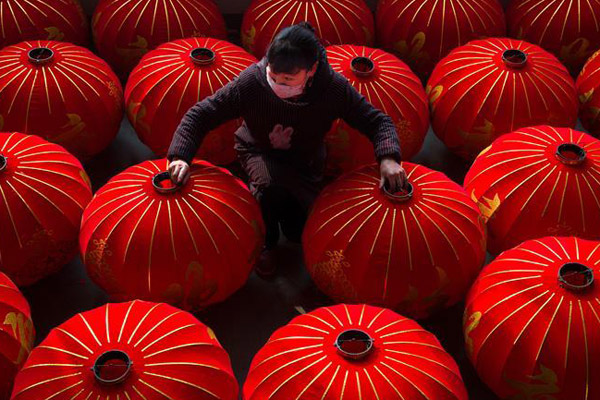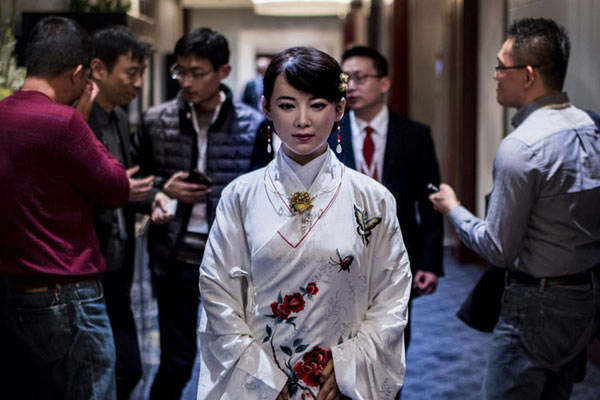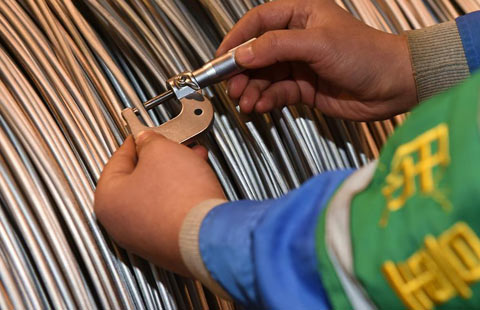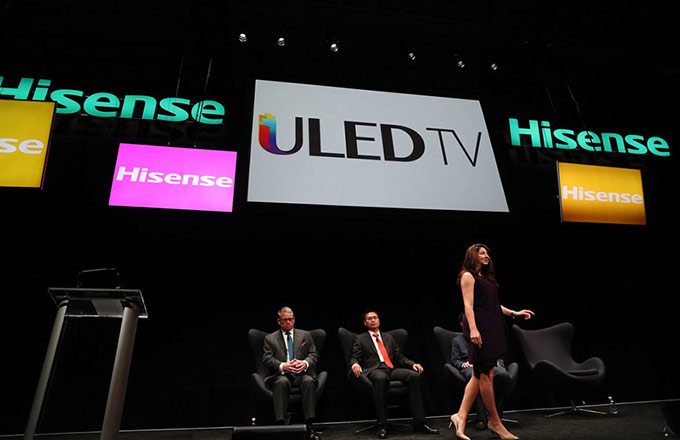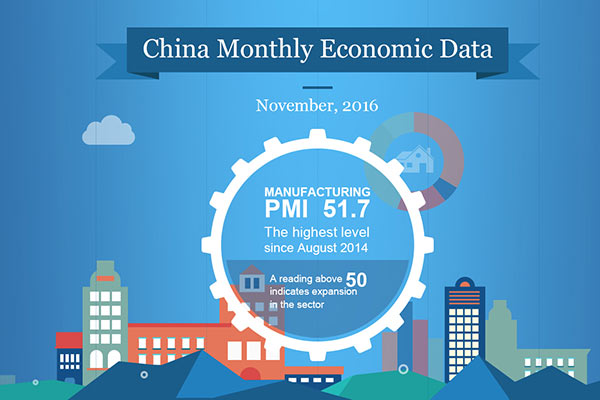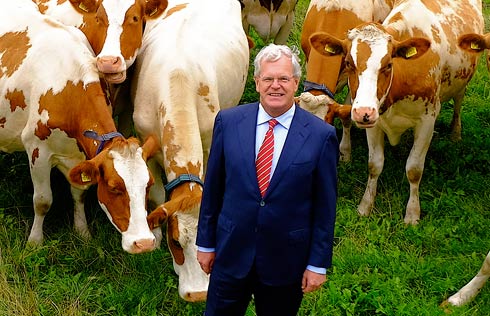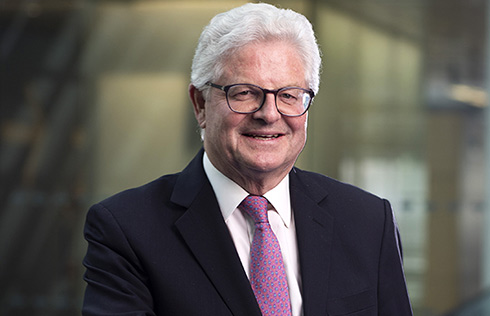FTAAP to serve as role model for globalization
BEIJING - As Chinese President Xi Jinping is visiting Switzerland for an annual meeting of the World Economic Forum, the China-backed Free Trade Area of the Asia-Pacific (FTAAP) is in the limelight amid rising protectionism in the region and a gloomy forecast of global trade in 2017.
A manifestation of China's steadfast effort to promote globalization, the FTAAP has been envisioned as a major instrument for realizing Asia-Pacific economic integration and is expected to serve as a role model for globalization by injecting vitality into the world economy and rekindling enthusiasm for free trade.
The new trade bloc has been gaining steam especially after a collective study on the FTAAP was approved at the 2016 Asia-Pacific Economic Cooperation (APEC) Summit in Lima, the first substantial step toward its eventual realization.
Need for FTAAP
2016 was a tough year for global trade and economy.
The World Trade Organization (WTO) has cut its projection for global trade growth from 2.8 percent to 1.7 percent in 2016 and revised down the forecast for 2017 to between 1.8 percent to 3.1 percent, from previously anticipated 3.6 percent. Similarly, overall global output growth is on a weakening trend.
"With expected global GDP growth of 2.2 percent in 2016, this year would mark the slowest pace of trade and output growth since the financial crisis of 2009," the trade bloc said in a press release in September.
Meanwhile, the election of Donald Trump as US president, who advocates the protection of the US economy and vowed to scrap the Trans-Pacific Partnership (TPP) -- a trade agreement proposed by US President Barack Obama -- on his first day in office, signifies that the ideology of de-globalization is gaining ground.
While the United States may not be a key player in propelling free trade, countries in the Asia-Pacific still hold high expectations for free trade and economic integration, Dr. Oh Ei Sun, senior fellow with S. Rajaratnam School of International Studies at Singapore's Nanyang Technological University, told Xinhua.
"The responsibility to promote free trade in the region naturally falls on China, the second largest economy in the world," he said. "As the Asia-Pacific region is the world's busiest area on trade and economy, I think China's initiative (to build the FTAAP) will give certain enlightenment for countries in Europe, Africa or even the United States."
The FTAAP process was launched at the 2014 APEC Summit in Beijing with the endorsement of a roadmap. A collective strategic study was conducted subsequently and the result was approved at the APEC meeting in Lima.
By encompassing all 21 APEC economies through trade liberalization, the FTAAP, once established, will become the world's largest free trade zone, covering 57 percent of the global economy and nearly half of world trade.
It has been hailed as "a strategic initiative critical for the long-term prosperity of the Asia-Pacific" by President Xi, who also called for a firm pursuit of the trade arrangement as an institutional mechanism for ensuring an open economy in the Asia-Pacific.
"We need to actively guide globalization, promote equity and justice, and make globalization more resilient, inclusive and sustainable, so that people will get a fair share of its benefits and will see that they have a stake in it," Xi said while delivering a speech at the APEC CEO summit in Lima.
Ways to advance FTAAP
APEC members should push forward the FTAAP process in a "comprehensive and systemic way," according to Zhang Jun, director-general of the Department of International Economic Affairs at the Chinese Foreign Ministry.
"The process of FTAAP shall serve as a rebuff to anti-globalization and a toolkit to strengthen Asia-Pacific regional integration," he was quoted by the South China Morning Post newspaper as saying in November.
"The FTAAP, being highly inclusive, can embrace economies at different levels of development and fully accommodate their development needs and comfortability, and once established, will deliver economic gains dwarfing any existing regional FTAs," Zhang said.
It will also "chart the course of integrating various trade arrangements in the region, meeting the challenge of the fragmentation in regional cooperation, and furthering the regional economic integration in the Asia-Pacific," Zhang added.
To bring together the 21 diverse economies of the Asia-Pacific under the same set of trade and investment rules, relevant parties are required to take time and be patient in future negotiations from the long-term perspective, Han Jae-jin, senior research fellow at the Hyundai Research Institute (HRO), said in a recent interview with Xinhua.
"Bilateral and mega FTAs have something in common. Both require concessions over sensitive items and understanding of different situations. It takes time and needs long dialogue," Han said.
Promoting the FTAAP on the basis of the TPP and the Regional Comprehensive Economic Partnership (RCEP) is a very ideal plan as the TPP is in an impasse and the RCEP also faces big challenges due to different levels of development in its member countries, Wang Jiangyu, associate professor at Faculty of Law of National University of Singapore, told Xinhua.
The RCEP is a free trade pact involving the 10-member Association of Southeast Asian Nations and six other countries -- China, India, Japan, South Korea, Australia and New Zealand.
"China can promote the FTAAP in an orderly way on the basis of current free trade deals," Wang said.
China can carry out bilateral free trade negotiations with countries willing to open their markets within the RCEP framework and upgrade existing bilateral free trade deals to promote the formation of the RCEP, he elaborated.
Besides, to make the FTAAP a meaningful free trade zone in the Pacific Rim, leaders of China and the United States, the two key players in the region, need to "discuss the issue to create a meaningful starting point of the FTAAP," said Kim Young-Gui, research fellow at the Korea Institute for International Economic Policy.
Furthermore, along with world economic development and convergence, connectivity, in addition to trade and investment liberalization and facilitation, has become a key driver for regional economic integration.
"Pushing for the FTAAP would be more effective if it goes together with the Belt and Road Initiative," said Han, the HRO researcher.
The Belt and Road Initiative refers to the Silk Road Economic Belt and the 21st-Century Maritime Silk Road Initiative proposed by China in 2013 to bring together countries in Asia, Europe and even Africa via overland and maritime networks.
Since the initiative was launched in 2013, Chinese companies had built 52 economic and trade cooperation zones in the Belt and Road countries, generating $900 million in tax revenues and nearly 70,000 jobs for these countries by July 2016.






